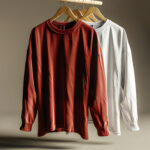Quilting is more than just a craft—it’s a tradition rich in storytelling, patience, and artistry. Whether you’re creating heirloom pieces, cozy throws, or detailed wall hangings, the process starts with one essential step: handing quilting fabric. At The Dusky Sparrow, we understand that the foundation of a beautiful quilt lies in how the fabric is prepared and handled. Every fold, cut, and press matters in achieving clean, precise, and professional results.
Understanding the Importance of Handing Quilting Fabric
Before a single stitch is sewn, handing quilting fabric correctly ensures a smoother process and a more durable finished product. Quilting fabric is typically 100% cotton, and while it’s strong and breathable, it also shrinks, warps, and frays if not treated with care. Proper handling reduces distortion, improves alignment, and keeps your project looking sharp from start to finish.
At The Dusky Sparrow, we encourage quilters—whether beginners or seasoned artists—to approach fabric handling as a vital part of the creative process. It’s not just a prep step; it’s the first connection between you and your quilt.
Pre-Washing or Not? The First Decision in Handing Quilting Fabric
One of the most debated topics in quilting is whether to pre-wash your fabric. While there’s no one-size-fits-all answer, there are good reasons on both sides.
The Case for Pre-Washing
Pre-washing helps remove chemicals and sizing used during manufacturing. It also allows the fabric to shrink before cutting, minimizing puckering after quilting. If your quilt will be washed frequently, such as a baby quilt or a bedspread, pre-washing is often the safer route.
At The Dusky Sparrow, our premium fabrics are pre-treated for quality, but we still recommend a gentle pre-wash if you’re mixing different brands or types of cotton.
Skipping the Wash
On the other hand, many quilters choose not to pre-wash, especially when they want the slight puckering that gives quilts a vintage, textured look after finishing. For wall hangings or display pieces, skipping the wash might not be an issue.
Whatever you choose, be consistent—pre-wash all fabrics in a single quilt or none at all to avoid tension issues.
Ironing and Pressing for Accuracy
Ironing your fabric is essential before cutting. Creases and folds can lead to crooked cuts and misaligned patterns. Use a hot iron with steam to press out wrinkles, laying the fabric flat on your ironing board without pulling or stretching.
At The Dusky Sparrow, we recommend pressing rather than ironing when working on blocks. Pressing means lifting and placing the iron down, not sliding it across the fabric. This avoids distortion and helps seams sit flat—critical for precision piecing.
Cutting Techniques and Tools
Once your fabric is clean and smooth, the next step in handing quilting fabric is accurate cutting. Rotary cutters, self-healing mats, and clear acrylic rulers are the tools of choice for most modern quilters.
Aligning the Grain
Always cut along the grain of the fabric. The straight grain (parallel to the selvage) offers the most stability, while the cross grain (perpendicular to the selvage) has a little more give. Avoid the bias (diagonal), unless your pattern requires it, as it stretches easily and can cause shape issues.
Aligning fabric before cutting is a skill that improves with practice. At The Dusky Sparrow, we host workshops that teach precision folding and cutting to eliminate waste and maintain consistency across all your pieces.
Safety and Storage
Rotary cutters are extremely sharp, so always cut away from your body and store tools safely. Keep your fabric stored in a dry, dark space, folded loosely or hung if possible to prevent creases that become permanent over time.
Preventing Fray and Managing Edges
Some quilting fabrics, especially lighter weights or printed cottons, tend to fray at the edges. Fraying can distort blocks and make sewing more difficult. To prevent this, handle raw edges carefully and avoid excessive tugging.
If you’re pre-washing, consider serging or zig-zag stitching the edges before tossing them in the machine. It saves fabric and prevents tangles in the wash.
At The Dusky Sparrow, we also recommend using pinking shears for trimming edges when storing scraps or preparing pieces for appliqué.
Handling Large Pieces of Fabric
When working on larger projects like bed quilts, you’ll be managing more fabric at once. It’s easy for pieces to become tangled, stretched, or wrinkled during cutting and layout.
Work in Sections
Break your work into manageable sections. Fold fabric carefully and work on one area at a time. Use fabric clips or pins to keep folds in place while moving between areas.
Use a Design Wall
A design wall allows you to lay out your blocks or fabric strips before stitching. Seeing the full picture helps you catch mistakes and refine color placement. At The Dusky Sparrow, our studio is equipped with padded design walls for planning and inspiration.
Caring for Fabric During the Quilting Process
Even after cutting and sewing begins, your fabric still needs attention. Oils from your hands, sunlight, and friction from movement can impact its appearance.
Wash your hands before working, keep beverages away from your station, and cover your in-progress quilt with a clean sheet when not in use. These small actions can extend the life of your fabric and ensure your quilt looks as vibrant and fresh as the day you started.
Final Thoughts on Handing Quilting Fabric
Handing quilting fabric is a subtle but powerful skill. It’s about respect—for your materials, your craft, and the final piece you’re building. Whether you’re creating a modern geometric quilt or a traditional patchwork heirloom, how you treat your fabric makes all the difference.
- Handing Quilting Fabric with Care | The Dusky Sparrow
- At The Dusky Sparrow, we’re committed to helping you at every stage of your quilting journey. From sourcing the highest-quality cottons to providing tools and tutorials, we believe that thoughtful fabric handling sets the tone for beautiful, lasting quilts.
- Handing Quilting Fabric
Related posts:
 Discover the Best Fence Installation Services in Omaha with Huskins Services LLC
Discover the Best Fence Installation Services in Omaha with Huskins Services LLC
 Summer Solstice Party Ideas & Activities for a Magical Celebration | BizzCrave
Summer Solstice Party Ideas & Activities for a Magical Celebration | BizzCrave
 At the Time of Booking: What to Keep in Mind During a Medical Emergency
At the Time of Booking: What to Keep in Mind During a Medical Emergency
 Streamline Your Business with an Automated Employee Payroll System
Streamline Your Business with an Automated Employee Payroll System
 Nutrition and Wellness Programs in Assisted Living Communities in Oakville
Nutrition and Wellness Programs in Assisted Living Communities in Oakville
 How UAE Fitout Experts Are Elevating Luxury Brand Spaces in 2025
How UAE Fitout Experts Are Elevating Luxury Brand Spaces in 2025
 Lightning-Quick Printing: Same Day Custom Long Sleeve Shirt Printing London
Lightning-Quick Printing: Same Day Custom Long Sleeve Shirt Printing London
 Boca Raton Auto Insurance: Online Quotes from Leading Providers
Boca Raton Auto Insurance: Online Quotes from Leading Providers







